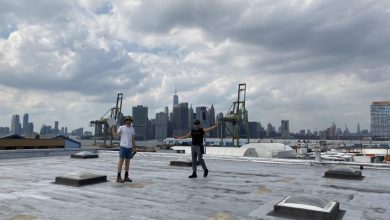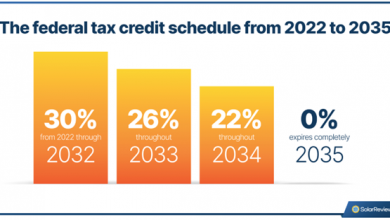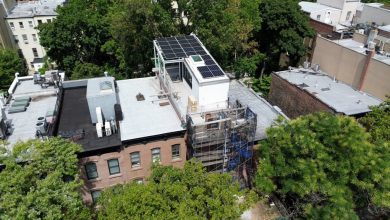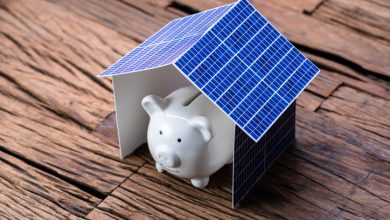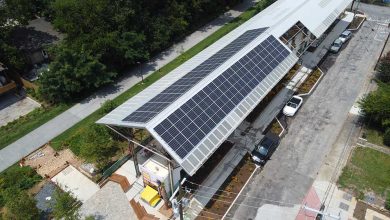What is Sustainable Building Design?
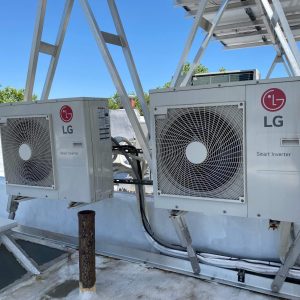
Sustainable building design is rapidly gaining momentum, especially in urban hubs like New York City. With the rise of environmental awareness and new building regulations, NYC has made strides toward more eco-friendly construction. This shift towards sustainable building design isn’t just a trend—it’s becoming mandatory.
One effective way to embrace sustainable building practices is through solar energy. Learn how solar power can play a pivotal role in creating more energy-efficient, eco-conscious buildings.
What is Sustainable Building Design?
Sustainable building design focuses on minimizing the environmental impact of buildings throughout their life cycle. This includes the planning, construction, operation, and eventual demolition of a structure. It is based on saving resources, lowering carbon emissions, and making life better for the people who use the residential and commercial buildings.
The concept of sustainable design gained traction during the 20th century in response to growing concerns about resource depletion, pollution, and climate change. What started as an environmentally-conscious niche has now evolved into a mainstream design approach, especially in cities like New York, where energy use and emissions are under heavy scrutiny.
Key Principles of Sustainable Building Design
Several guiding principles shape sustainable building design, helping developers and architects create structures that are energy-efficient, environmentally friendly, and health-conscious. Here are the key principles.
Energy Efficiency
Energy-efficient buildings use less power to heat, cool, and illuminate. Property owners often achieve this through improved insulation, efficient HVAC systems, smart windows, and clean energy sources like solar panels. Energy-efficient design reduces both operational costs and the building’s carbon footprint.
Water Conservation
Water conservation is another critical principle of sustainable building design. You can accomplish this through low-flow fixtures, rainwater harvesting systems, and greywater recycling. Efficient water management is essential, especially in urban areas where demand on water resources is high.
Material Selection
Selecting eco-friendly materials that are sustainable, recycled, or sourced locally is vital in reducing the environmental impact of construction. Materials that are non-toxic and have lower embodied energy contribute to the building’s sustainability profile.
Indoor Environmental Quality
The health and well-being of occupants are crucial to sustainable design. This principle focuses on factors like air quality and natural lighting to create a comfortable and healthy indoor environment. Using non-toxic materials and ensuring proper ventilation are central to this idea.
Site Selection and Planning
Choosing an appropriate site and planning for minimal environmental disruption is another pillar of sustainable building design. Urban locations that reduce the need for transportation, minimize land use, and integrate green spaces help lower the environmental impact of new building developments.
Why is Sustainable Building Design Important to New York City?
New York City’s buildings are its largest source of carbon emissions, accounting for nearly 70% of the city’s total greenhouse gasses. As part of NYC’s ambitious climate goals, sustainable building design is critical to achieving a greener future.
By prioritizing energy efficiency and reducing emissions, sustainable buildings also help ease the strain on the electrical grid, improve air quality, and support better public health outcomes. With initiatives like the NYC Climate Mobilization Act, sustainable design isn’t just a preference—it’s becoming a necessity.


Is Sustainable Building Design Mandatory in NYC?
Yes, sustainable building design is becoming effectively mandatory in New York City. Over the last few years, the city has passed a series of laws that require buildings to meet strict environmental standards. These regulations shape how developers execute new projects and renovations, focusing on sustainability.
Local Law 92/94
Local Law 92/94 mandates that all new buildings, or buildings undergoing significant roof renovations, must install solar panels or a green roof, making renewable energy a requirement rather than an option.
Local Law 154
Local Law 154, also known as the “All-Electric Buildings Law,” is a significant step in New York City’s plan to reduce carbon emissions by transitioning buildings away from fossil fuel reliance. The law mandates that new buildings, as well as major renovations, must use electricity as the primary power source, effectively phasing out gas- and oil-powered systems like stoves, boilers, and heating units. For smaller buildings (up to seven stories), compliance started January 1, 2024 and larger buildings are required to follow suit by 2027.
Local Law 97
One of the most stringent climate laws, Local Law 97 caps the emissions of buildings larger than 25,000 square feet. Starting in 2024, buildings must comply with emissions limits, with steep penalties for non-compliance. This law is a major driver for energy-efficient retrofits and renewable energy installations.
Make your building code compliant with ease. Submit your solar design request to our team today!
Benefits of Solar Energy for New Construction & Renovations in NYC
Solar energy is one of the most effective ways to reduce a building’s energy consumption. It aligns perfectly with the key principles of sustainable building design and offers a host of additional benefits.
Reduced Energy Costs
One of the most significant advantages of solar energy is the reduction in electricity costs. By generating electricity from the sun, buildings can drastically reduce their reliance on the grid, which translates to lower monthly utility bills. Over time, this can lead to substantial savings, particularly as energy prices continue to rise in New York City. For new construction, integrating solar panels during the design phase ensures that the building benefits from energy savings from day one.
Compliance with Local Laws and City Codes
In NYC, compliance with environmental laws is critical for avoiding costly fines. Solar energy can help buildings meet the stringent requirements set forth by Local Laws 92/94, 97, and others. These laws mandate energy efficiency and emissions reductions, and incorporating solar energy into your building’s design is one of the most straightforward ways to comply. Solar energy helps buildings meet emissions caps and green building mandates, future-proofing your development against evolving regulations.


Environmental Impact
Solar energy significantly reduces a building’s carbon footprint by replacing fossil fuel-based electricity with renewable power. This transition helps combat climate change by reducing greenhouse gas emissions, which is especially important in a city like New York, where buildings contribute to the majority of emissions. By integrating solar energy, developers can create more sustainable buildings that contribute to the city’s broader environmental goals.
Energy Independence
Solar energy offers greater energy independence for buildings. By generating their own electricity, properties can become less reliant on the local power grid, which can be particularly advantageous during peak demand periods. This energy independence ensures that buildings have a more stable and predictable energy source, which can be especially important in large developments.
Increased Property Value
Installing solar panels can increase the overall value of a property. People view solar PV systems as valuable upgrades that make buildings more attractive to buyers and tenants alike. Lower energy costs, compliance with local laws, and environmental consciousness all contribute to the building’s marketability. For developers, solar panels provide a competitive edge in a market increasingly focused on sustainability and energy efficiency.
Increase your property value and start saving with solar today! Submit your design request to our team today.
How can Solar Panels be Integrated into New Construction & Renovations?
We specialize in helping architects, developers, and general contractors seamlessly integrate solar panels into their new construction and renovation projects. Our dedicated department offers expertise in maximizing the benefits of solar energy while ensuring compliance with city regulations and reducing costly changes during construction. Here’s what’s involved in the process.
Roof Layout and Structure


A well-thought-out roof layout is critical for building an efficient solar energy system. The structure and size of your roof directly influence the effectiveness of solar panel placement and energy generation. By getting involved early in the planning stages, we can work with your architects and contractors to design a layout that optimizes solar power while minimizing the need for later modifications.
This proactive approach not only saves time but also ensures that your project complies with building requirements while making the most of the available space.
City Codes and Zoning
Navigating New York City’s intricate building codes and zoning laws can be challenging when it comes to solar installations. Our team will manage the permitting and navigate the city’s regulatory framework for solar installations, ensuring projects are not only code-compliant but also optimized for energy production. This includes meeting height restrictions, fire safety rules, and setback requirements that may affect your solar panel layout.
Custom Solar System Designs


Every building has unique needs, and we tailor our solar designs to meet your specific project requirements. Our custom solar systems ensure perfect alignment of your panels with your building plans. For example, our solar canopy, designed for NYC’s urban landscape, adds a modern look to rooftops while creating usable recreational space. It’s the perfect solution for developers looking to maximize energy efficiency without sacrificing aesthetic appeal.


We also offer tilt racks for a more traditional, subtle appearance.
The Future of Sustainable Building Design in NYC
Sustainable building design is more than a passing trend—it’s the future of urban development in New York City. With strict environmental regulations and a clear focus on reducing emissions, sustainable practices are becoming standard. This shift is good news for the city, promising better air quality, lower energy costs, and a healthier environment for residents.


Experience Seamless Solar Integration with Your Local Partner
If you’re ready to integrate solar into your next construction or renovation project, our specialty projects team is here to help. We make solar integration easy, ensuring your building is energy-efficient and compliant with NYC’s latest codes.
Want to integrate solar with your new construction or renovation project? Get started by submitting a solar design request today!


